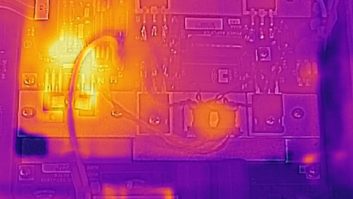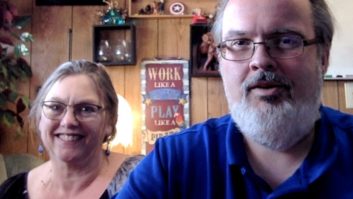
Fig. 1: The results of a hard fault on a three-phase disconnect. The conversation during a spring NAB Show workshop turned to tightening fuses and disconnect box connections.
Routine inspections are always a good idea, but should nevertheless be performed only by licensed professionals.
Wayne Eckert of Channel 1 Images sent in this picture of a three-phase electrical service, fed underground via the PVC conduit at the bottom of the panel. Cabling runs up to the knife switches at the top of the panel, then down to the fuses and finally into the building through the lower conduit exiting the rear of the panel.
There was a hard fault on the leftmost phase (phase A); its fuse failed to extinguish or contain the arc and exploded. The plasma from that explosion caused a phase-to-phase arc between phases A, B and C. This vaporized the fuse holders and burned up the B and C phase fuses, the shells of which can be seen lying in the bottom of the panel (Fig. 2). The current finally rose to a point that the power company’s distribution transformer primary fuses dropped and killed the circuit.
Think about the risk of personal injury here. Plasma pressures inside the panel were sufficient to bend the cover. Heat vaporized the rear of the panel, exposing the wall behind it. This all happened as a flash, not a long-term arc, lasting only 30 to 60 cycles or a second or less.
Imagine what this level of energy would do to flesh, muscle and bone had the panel been opened when an engineer was standing before it and not wearing proper protection equipment.
Wayne’s advice? Leave electrical panel work to licensed electricians. You certainly may know how to maintain electric panels; but operating as an unlicensed electrician can still leave you open to liability, should something occur.
* * *

Fig 2: There’s not much left after this fire. David DeSpain hails from Fort Worth, Texas, and is a registered professional engineer. He writes to warn engineers about using even very fine sandpaper to burnish relay, contactor or switch contacts.
Yes, the sandpaper may clean off the dirt, but disastrous results will follow. The abrasive used in the sandpaper will embed itself in the relatively soft contact metal, preventing complete contact closure. This can result in intermittent operation or accelerated failure. Sandpaper also can remove too much of the contact metal and change the contour of the contact.
Use a diamond contact cleaner or a piece of typing paper instead. David also recommends a strip of crocus cloth, which is similar to emery paper but softer and sometimes hard to find locally. It’s not cheap but can be found online at a source like Olsen Industrial (www.olsenindustrial.com).
A 3-inch by 50-yard roll is about $60, but a little goes a long way. Maybe buy a roll and divide the cost among your market engineers.
* * *
On the last day of the NAB Show, the Telos Alliance celebrated the wedding of Janis and Inga (Jahimcika) Timma. Janis is a software engineer at the company’s Riga office.
It reminds me that 25 years ago, Delta Electronics’ AM stereo technician Chris Wilk married Delta sales secretary Michelle Howe at the NAB Show.
Judith Gross, then Radio World’s editor, and I witnessed that wedding at Circus Circus. It’s hard to believe that many years have passed. Chris and Michelle are still happily married, have three grown girls, and Chris is now the chief engineer for Delmarva Broadcasting’s Delaware and Salisbury/Ocean City Maryland properties.
Good things do happen in Vegas. We extend our congratulations to both couples!
Contribute to Workbench. You’ll help your fellow engineers and qualify for SBE recertification credit. Send Workbench tips to [email protected]. Fax to (603) 472-4944.
Author John Bisset has spent 44 years in the broadcasting industry and is still learning. He handles West Coast sales for the Telos Alliance. He is SBE certified and is a past recipient of the SBE’s Educator of the Year Award.












